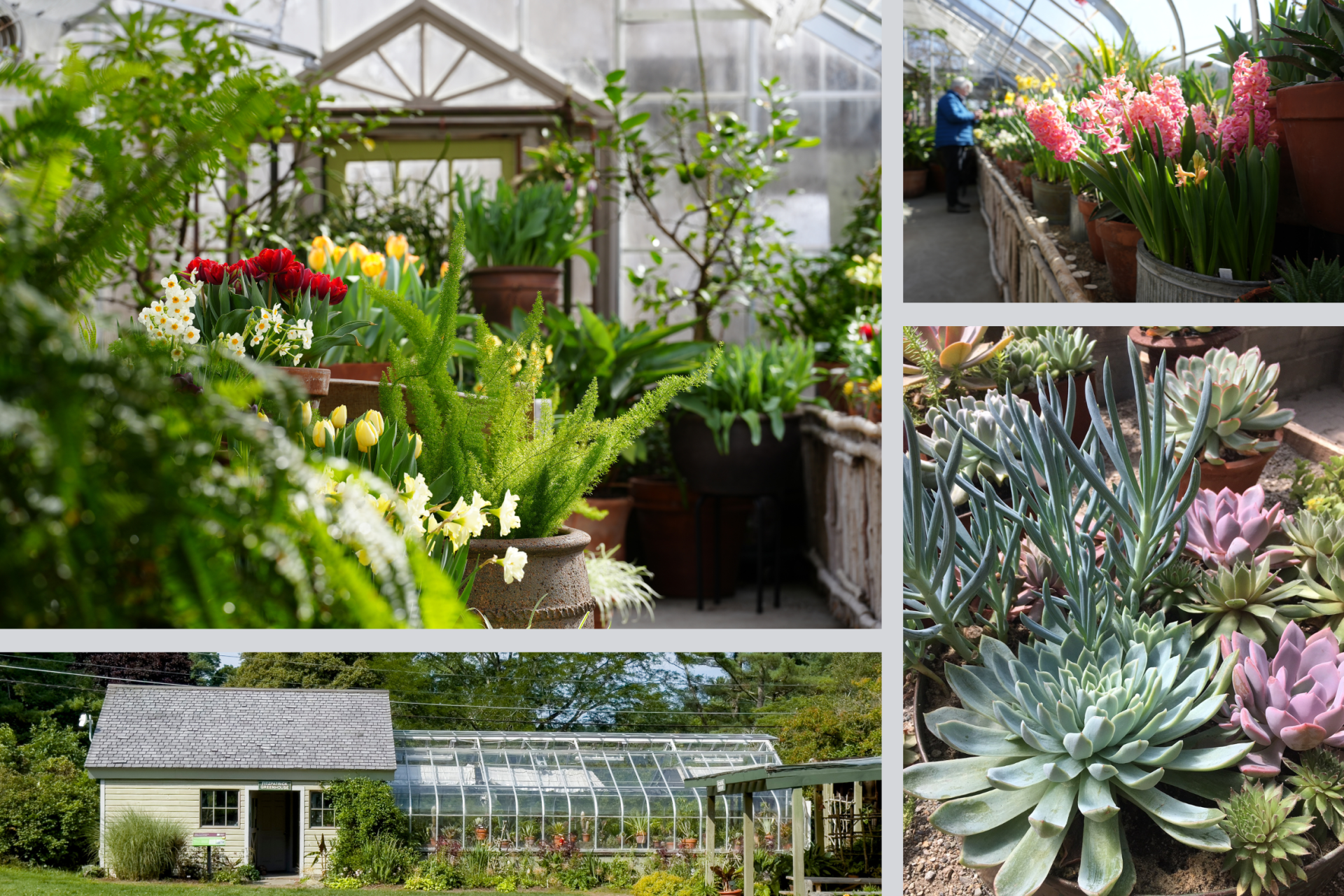You are here
Fitzpatrick Conservatory
Fitzpatrick Conservatory
What gardeners grow is typically limited by climate and season. Greenhouses, however, create a controlled environment for year-round growing, from seed starting and bulb forcing to growing heat-loving exotics. The Fitzpatrick Conservatory, a greenhouse built in the 1930s and donated to BBG in 1959, was renovated in 2014 with a grant from the Jane and Jack Fitzpatrick Trust.
Controlling Conditions
People have long found ways to create controlled environments to extend the growing season, or to grow plants from other climates. These techniques run from the simple to the complex. In ancient Rome. farmers planted vegetables in wheelbarrows, leaving them outside during the day and bringing them inside on cold nights.
Simple greenhouses in 13th century Italy nurtured exotic tropical plants brought from afar by explorers, and the first greenhouse with manual temperature controls was described in 15th century Korea. The golden era of greenhouses came in the 19th century, with grand, ornate Victorian conservatories and glasshouses like the ones at the Royal Botanic Gardens.
Did You Know?
Greenhouses create their own ecosystem by letting in sunlight (nearly 90 percent of outside light passes through the glass) and trapping some of the sun's warmth inside. But that trapped warmth may not be enough to sustain plants in cooler climates. Providing additional heat need not be expensive. In the orangerie at Mount Vernon, a manure slurry was placed on the north wall of the building in winter to decompose and generate heat to keep the first President's beloved citrus collection protected from frost.
Help Our Garden Grow!
Your donation helps us to educate and inspire visitors of all ages on the art and science of gardening and the preservation of our environment.
All Donations are 100 percent tax deductible.


